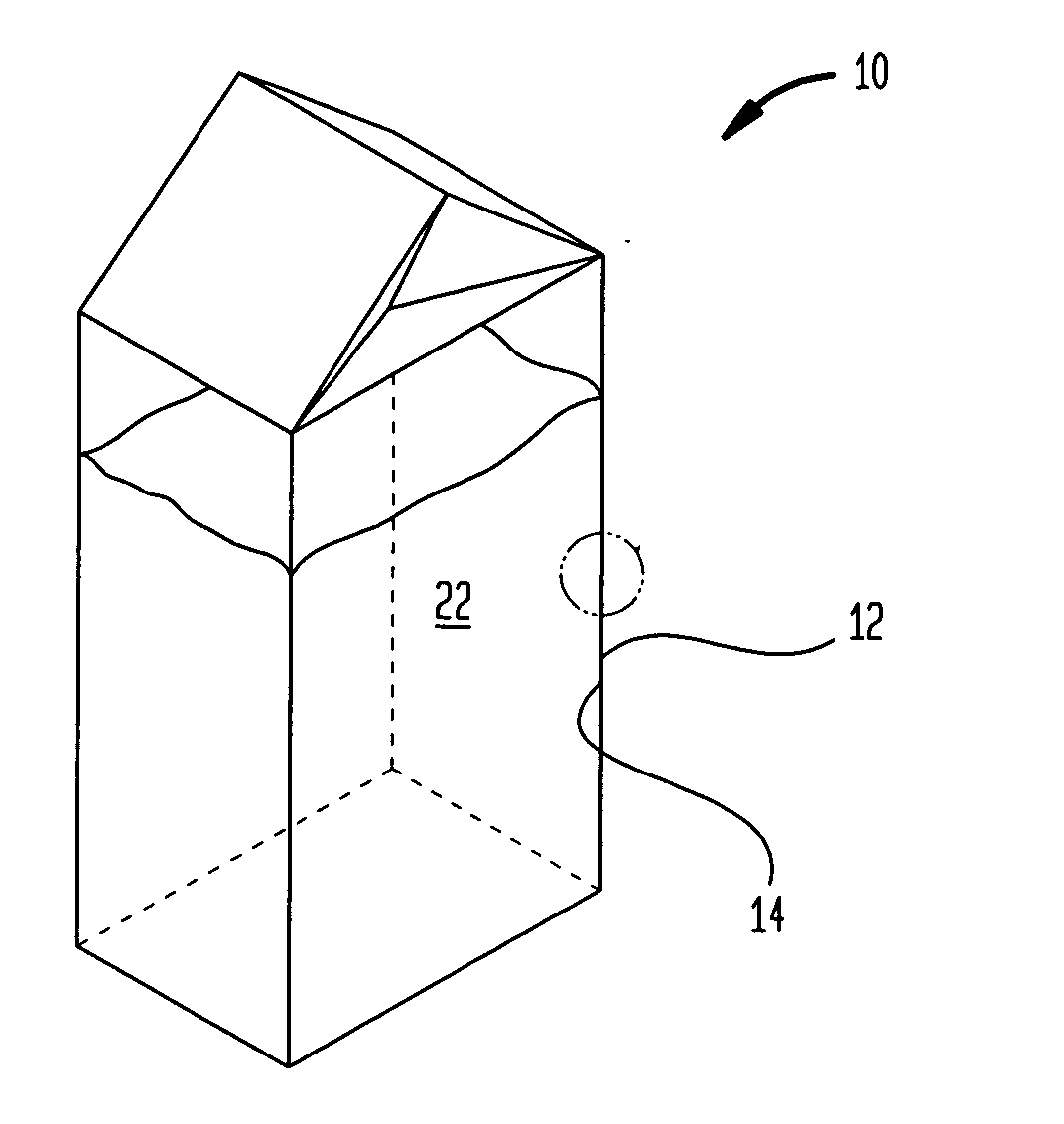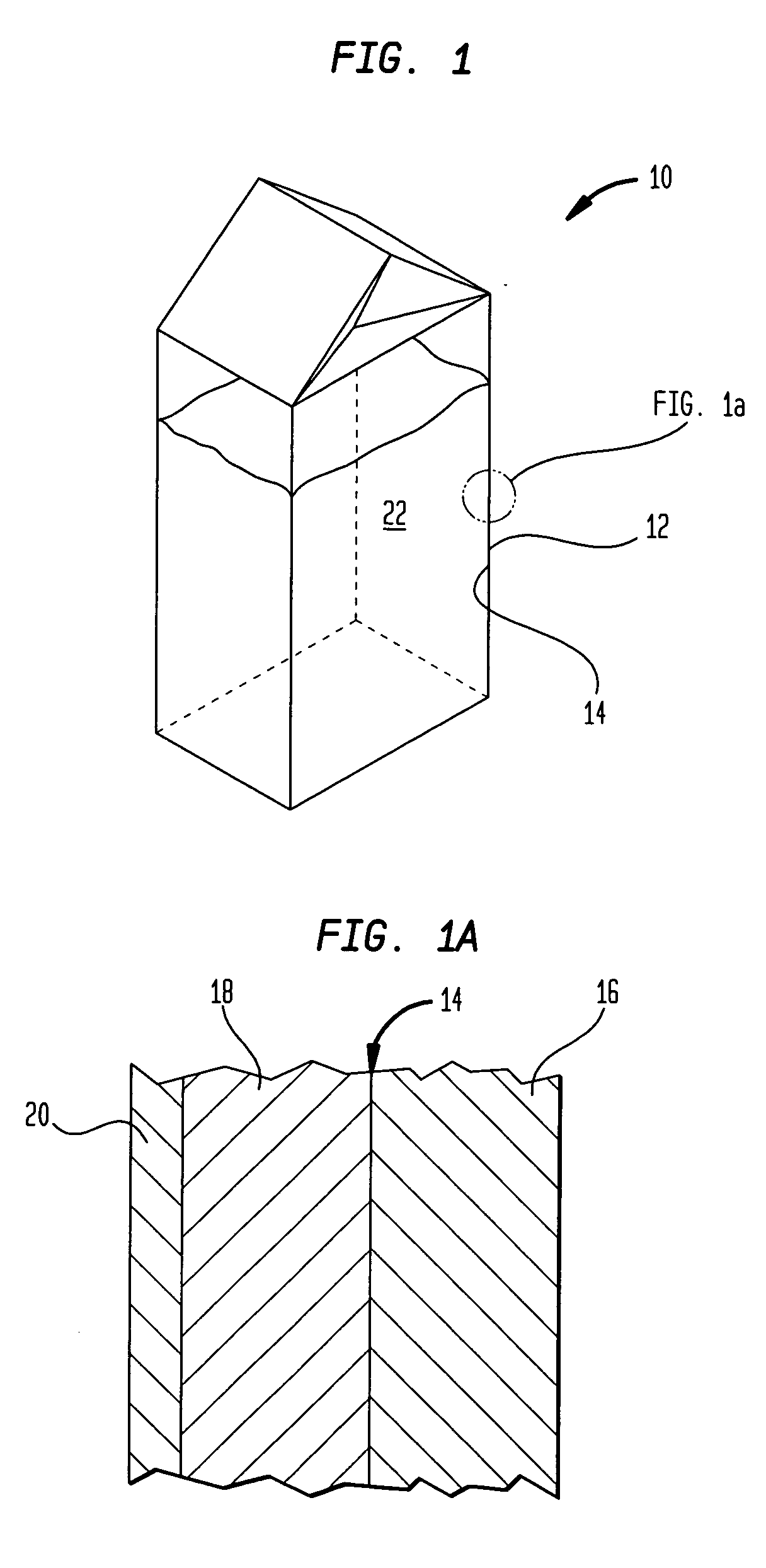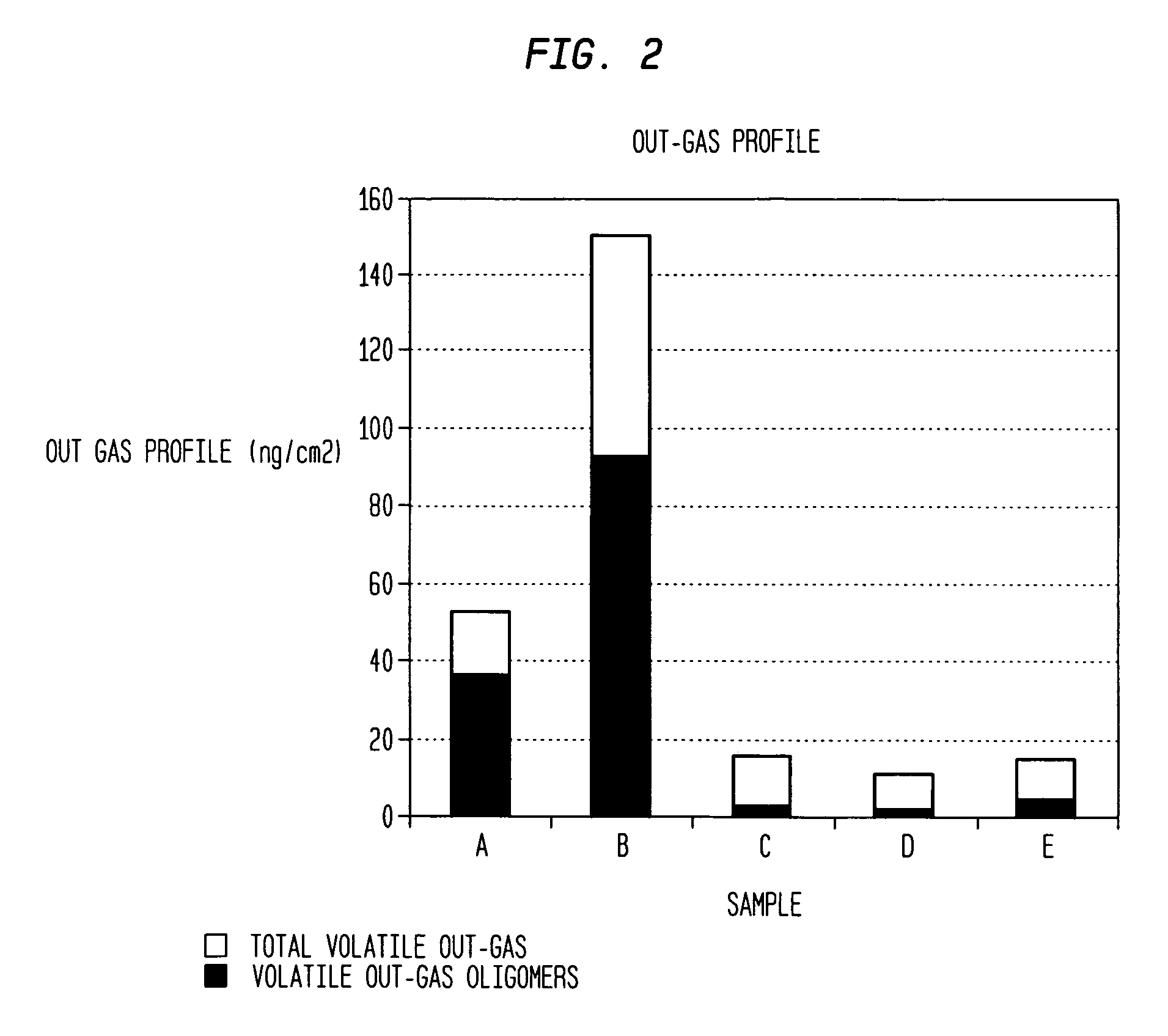Packaging with cycloolefin food/beverage contact layer
a technology of contact layer and cycloolefin, which is applied in the field of multi-layer packaging of foods or beverages, can solve the problems of high cost, high cost, and high cost of extractable compounds, and achieve the effect of low cos
- Summary
- Abstract
- Description
- Claims
- Application Information
AI Technical Summary
Benefits of technology
Problems solved by technology
Method used
Image
Examples
example 1
Volatile Out-Gas Profiling
[0053] In order to evaluate the odor properties of the film samples, the samples in Table 1 were subjected to volatile out-gas profiling using Purge and Trap-Thermal Desorption-GS-MS analysis. The analysis proceeded as described below.
[0054] Approximately 1 g (200 cm2 of one-side surface area) of each polymer sample was measured into a Scientific Instrument Services, Inc. (SIS, Ringoes N.J.) solid sample purge and trap apparatus. The samples were spiked with internal standards (1.0 μg of d-8 toluene and d-8 napthalene) and then heated to 80° C. for 30 minutes. During this time, the volatile out-gas products from the films were purged with nitrogen at a rate of 40 ml / min and were trapped and concentrated on Tenax-TA adsorbent cartridges. The adsorbent trap had an adsorbent trap bed volume of 6 cm. The GLT desorption tube had an inside diameter was 3mm. The thermal desorption temperature was set to 250° C., the desorption time was 5 minutes, and the injecti...
example 2
Extractables Testing
[0059] Film samples were weighed out to about 1.0 g and their one-side surface area was approximately 200 cm2. Samples were cut into small sections of approximately 1 cm2 and placed in a 50 ml test tube containing 40 ml of 10% ethanol in distilled water sealed with a Teflon-lined screw cap closure. Tubes were tightly stoppered and then incubated at 60° C. for 24 hours with constant agitation. Following incubation, the tubes were cooled to room temperature and the film removed. Internal standard (anthracene-d10) at a concentration equivalent to approximately 100 PPB w / w (1.0 μg) relative to film sample weights was spiked into the tubes along with 10.0 ml of methylene chloride. Samples were agitated and the extraction solutions were centrifuged at 2000 RPM for 30 minutes to promote complete phase separation. Lower methylene chloride layers were transferred to 5 ml size, conical-bottomed vials and concentrated under a gentle stream of nitrogen at room temperature t...
example 3
Flavor / Aroma Scalping Study of Polymer Samples
[0065] Orange Juice (Tropicana® pure premium, no pulp, not from concentrate) was used as the consumable for determining flavor scalping properties of the films. The flavor / aroma profile of the orange juice was previously analyzed using Purge and Trap-Thermal Desorption-GC-MS methodology. In this analysis, 10 ml of orange juice was diluted with 90 ml of distilled water, sealed in a glass purge vessel containing a magnetic stir bar and matrix-spiked with internal standards (100 ppb w / w, d-8 toluene and d-8 napthalene). Juice was heated to 50° C. for 30 minutes and purged with nitrogen at a flow rate of 40 ml / minute. Aroma / flavor volatiles were trapped and concentrated on a Tenax-TA adsorbent cartridge. The Tenax trap was then analyzed by Short Path Thermal Desorption-GC-MS. Compounds detected in the flavor / aroma profile of the orange juice were then targeted for investigation in the scalping study of the polymer samples. The targeted comp...
PUM
| Property | Measurement | Unit |
|---|---|---|
| Temperature | aaaaa | aaaaa |
| Temperature | aaaaa | aaaaa |
| Temperature | aaaaa | aaaaa |
Abstract
Description
Claims
Application Information
 Login to View More
Login to View More - R&D
- Intellectual Property
- Life Sciences
- Materials
- Tech Scout
- Unparalleled Data Quality
- Higher Quality Content
- 60% Fewer Hallucinations
Browse by: Latest US Patents, China's latest patents, Technical Efficacy Thesaurus, Application Domain, Technology Topic, Popular Technical Reports.
© 2025 PatSnap. All rights reserved.Legal|Privacy policy|Modern Slavery Act Transparency Statement|Sitemap|About US| Contact US: help@patsnap.com



